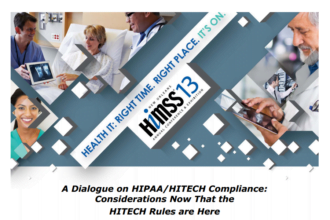How will Hospitals transition from treating acute conditions to treating patients?
 While hospitals try to do everything they can to help a patient, they only get paid for treating the acute condition (or primary diagnosis). It could be a diabetic patient with high sugar in the Emergency Room or a Heart Failure patient admitted to the hospital. Patients are treated and released from the Em
While hospitals try to do everything they can to help a patient, they only get paid for treating the acute condition (or primary diagnosis). It could be a diabetic patient with high sugar in the Emergency Room or a Heart Failure patient admitted to the hospital. Patients are treated and released from the Em
How will Hospitals transition from treating acute conditions to treating patients?
 While hospitals try to do everything they can to help a patient, they only get paid for treating the acute condition (or primary diagnosis). It could be a diabetic patient with high sugar in the Emergency Room or a Heart Failure patient admitted to the hospital. Patients are treated and released from the Emergency Room and discharged from the hospital once the acute condition is being addressed.
While hospitals try to do everything they can to help a patient, they only get paid for treating the acute condition (or primary diagnosis). It could be a diabetic patient with high sugar in the Emergency Room or a Heart Failure patient admitted to the hospital. Patients are treated and released from the Emergency Room and discharged from the hospital once the acute condition is being addressed.
Hospitals must be effective and efficient in addressing the patient’s acute condition as well as managing to a predetermine reimbursement amount. Yet the emerging new reimbursement system (see 8 Performance Programs That Will Change Healthcare) introduces penalties and shared savings incentives for what happens to patients once they leave the four walls of the hospital. The hospitals will have the dual incentive to effectively address the acute conditions and ensure the patient does not come back.
Yes, this is an interesting new dilemma. How many businesses are incented to make sure their customer never come back? This may explain why 46 percent of hospital executives have no plans to implement an Accountable Care Organization (ACO) type model in the near future. Also, less than 10% of hospitals are participating in the Medicare bundled payment program which began in the fall of 2013.
Emergency Room
When the diabetic patient comes to the ER for low sugar, the condition needs to be treated immediately. This is how hospitals are reimbursed. Yet this patient has hyperlipidemia (High Cholesterol), Hypertension and End Stage Renal Disease. The patient doesn’t have a ride to dialysis treatments, is not eating nutritional food and is homeless. How will the hospital ER treat this patient? Without addressing the patient’s unmet needs for a job, housing, child care, transportation and food security, it is unlikely this patient will focus on their health. If the patient needs are left un-addressed, they will likely be back in the ER within the month. The hospital may get penalized and may even need to refund money if in a shared savings arrangement.
Base on a study recently published in Health Affairs, the primary diagnosis of frequent Emergency Room users (10 or more ER visits per year) can be misleading. 11% of the time it was for a chronic condition, 12% for substance abuse and 6% for mental illness. Yet of these frequent ER users, 77% had chronic disease conditions, 62% had history of substance abuse and 70% had a history of mental illness. A busy ER is equipped to treat the primary diagnosis and is not reimbursed to treat each of the contributing factors.
Hospitals involved in Bundled Payments and ACOs will need to treat the entire patient. Becky Kanis, from a group called Community Solutions, has demonstrated the impact of addressing the entire needs of patients by providing homes for the homeless. She told 60 Minutes that “many of these people have such serious medical problems, it costs taxpayers more to leave them on the street.”
Inpatient
When a patient is admitted to the hospital for heart failure, the hospital will get a single payment for the stay. There are three payment levels for Heart Failure based on whether the patient has complications from comorbidities such as a hypertensive heart or chronic kidney disease. Again, the hospital may not be equipped to deliver an air conditioner to the patient’s home, ensure the patient gets their prescription filled or provide a ride to the cardiologist office. Yet doing each of these in the first 7 days could be the most cost effective ways to keep the patient from being readmitted to the hospital within 90 days.
It will be a significant transformation for hospitals to treat the entire patient. Innovative hospitals that are testing the new reimbursement models will likely show us the way. There are over 300 hospitals in the Medicare bundled payments programs and 366 Medicare ACOs of which half of them have a hospital as a member. There are an additional 240 ACOs that have arrangements with private insurance plans. There are also several other shared savings arrangements like 24 hospitals have with Blue Cross and Blue Shield of Michigan.
The most significant impact on healthcare costs, health and quality may come from treating the entire patient and realigning the healthcare system to support this. We may soon find out how much improvement is possible.
(treating a patient / shutterstock)








